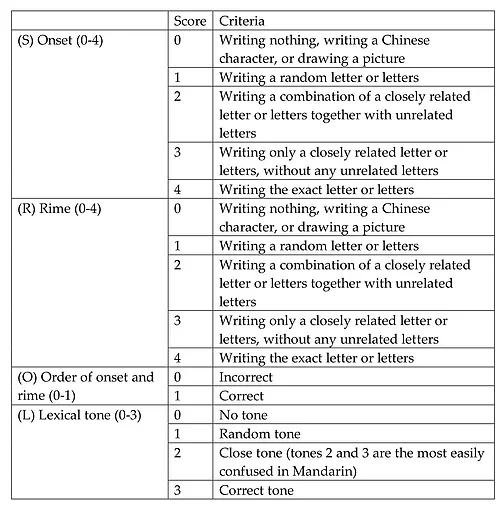For students learning Pinyin as an aid in Chinese word and character learning, Pinyin knowledge itself is important for early reading and writing (this is probably true for Zhuyin-Fuhao as well, but our research has been on Pinyin only). Skill with Pinyin is associated with better reading of Chinese even five years later, even with early Chinese reading statistically controlled. Parents or preschool teachers who encourage children to try to write in Pinyin on their own are helping children develop this skill.
Try asking children especially to write Pinyin words they do not yet know. Help to scaffold their writing by highlighting the sounds in the word, including the tone of the word. When children can write what they hear, they are faster and more efficient in literacy skills. In addition, some of children’s writings, even when technically incorrect, reflect relatively sophisticated approaches to speech. For example, the child who confuses tone 2 with tone 3 is closer in identifying tones than is one who confuses tone 2 with tone 4. Similarly, some sounds such as /b/ and /p/ are more similar in position of the mouth when pronounced than are others (like using a b for n, for example). See below for the ways in which we have coded Pinyin invented spelling before.
